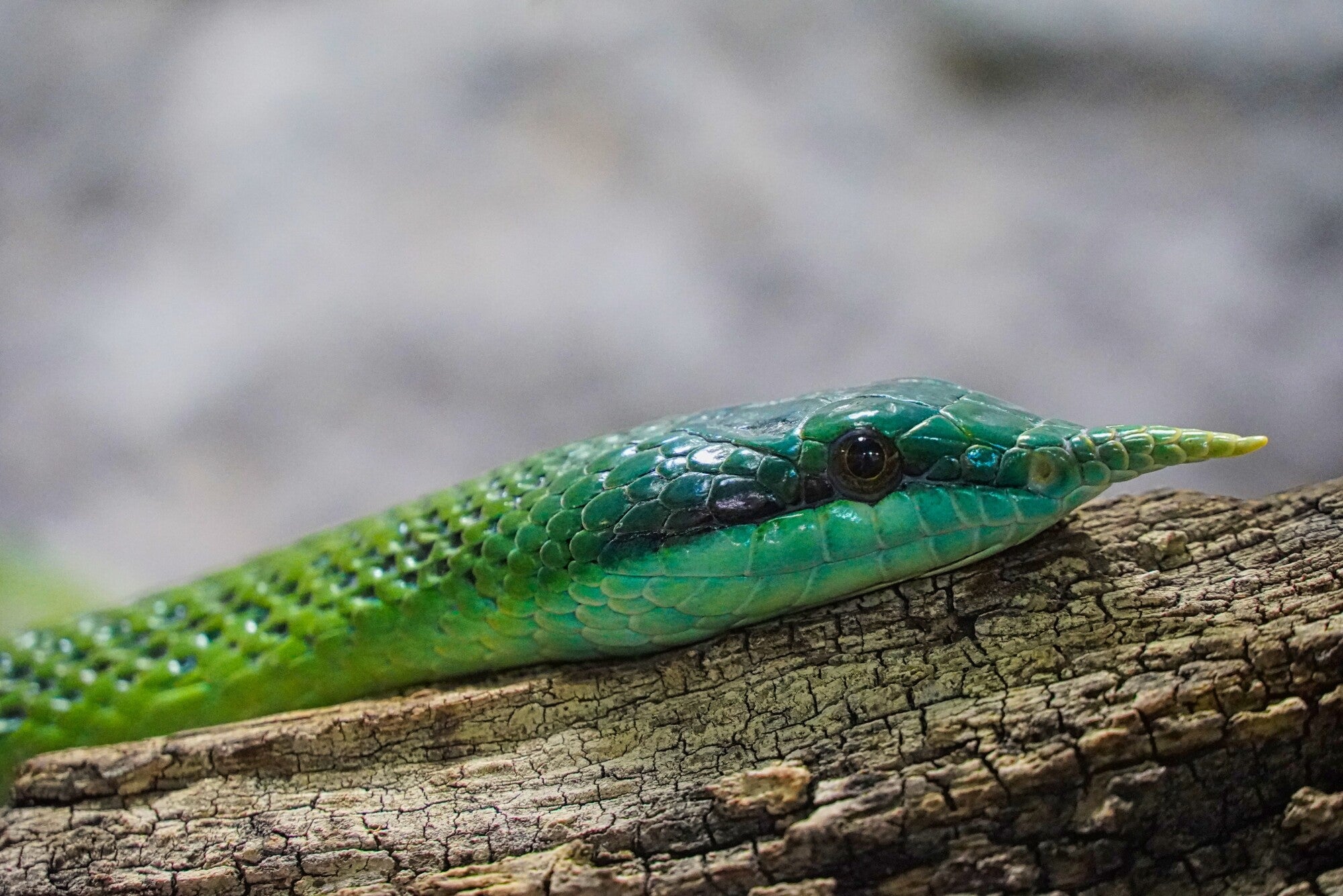Did you know that there are more than 3,000 snake species worldwide? Many snakes in the world are huge and dangerous, while others are small and relatively harmless. The rhino rat snake, for example, is a snake that is often kept as a pet due to its more docile nature.
If you have this type of snake or if you are thinking about getting one, you might be wondering how you should take care of your rhino snake. After all, what does this snake need to eat to remain healthy? What kind of environment should it live in?
Keep reading and learn how to take care of a rhino snake below
What Should a Rhino Rat Snake Eat?
When you get a rhino rat snake as a pet, you will need to think not only about the type of food you provide but also about how often you need to feed your pet. Owning a rhino rat snake is delicate business, and if you don't provide it with the right kind of nutrition, it won't be very healthy. In some cases, snakes can become malnourished and even die due to poor feeding habits.
Since you don't want that to happen to your snake, you should always pay plenty of attention when feeding it. The rhino rat snake diet is all carnivorous, which means that they eat meat. Usually, snakes in the wild eat rodents such as mice, although they may also eat other small animals such as chicks.
When you keep a rhino rat snake as a pet, it is a good idea to buy frozen mice. Frozen mice for sale make it easy to feed your snake since, after all, the mice have already been prepared for consumption. But how often should you feed your snake every day?
It will mainly depend on the size and age of your snake. If your snake is still very young and small, you won't need to feed it as much as a fully-grown snake. For example, a young snake who recently hatched should be fed around once every five days.
The Details
This may not sound like a lot, but snakes can continuously digest their prey for a long time, so you won't need to feed them very often, and certainly not every day. You just need to make sure that the meal you give your snake is sufficient.
Ideally, what you feed the snake should be more or less the same width as the snake. Also, if you're using frozen mice or anything else that is frozen, make sure to thaw the food before giving it to your snake. For juvenile snakes, it is best to feed them every seven to fourteen days.
Finally, for adult snakes, you only need to feed them every fourteen days. Be sure that you don't always feed your snake the exact same thing. While mice are very nutritious, you should also offer other types of food on occasion, such as frozen chicks.
On occasion, it might even be a good idea to offer the snake some nutritional supplements or vitamins. While these usually aren't necessary, they are helpful for making sure that your snake is as healthy as possible.
Rhino Rat Snakes and UVB Lights
While these snakes can survive without UVB lights, that doesn't mean you shouldn't provide them for your snake's environment. This is because having proper lighting for your snake will ensure that it is as healthy as possible. Lighting is important because it allows the snake to bask in the warmth of the light.
Besides that, proper lighting is also needed to help the snake's hormone rhythms, metabolism, and overall health. This is not to mention that the light will provide the snake with a steady stream of warmth and vitamin D. When you buy a UVB light for your snake's enclosure, just make sure that the light is large enough.
Ideally, it should be around half the length of the entire enclosure. As for the light fixture, a reflective fixture is best since it will help provide the snake with more total light. Placing the UVB light next to your heat lamp is also a good idea since it will allow the snake to both get warm and get plenty of light in one place.
You might be wondering why you should give your snake an artificial UVB light when this type of light comes straight from sunlight. Can't you just put your snake's terrarium in front of a bright window? Unfortunately, you can't because UVB light specifically is not able to travel through glass or other similar materials.
What You Need to Know
While other types of light might be able to travel through glass, UVB light will be left behind, and your snake will suffer as a result. In the same vein, you'll have to make sure that your UVB light isn't covered by anything. Some bulbs come with clear glass or plastic covers, but this won't work with a UVB light since it will only block the light.
Once you get your light and you have it set up, you might be wondering how long you should keep it on throughout the day. The length of time you keep the light on will help the snake regulate its hormonal cycles and patterns. If the light is on for too long or too short of a time, this could mess up the snake's regular patterns.
Ideally, during the summer months, you should keep the light on for around 13 hours. This will give the snake plenty of time to enjoy the light but not too much time. This length of time is also similar to the exposure to light a snake might get in the wild.
As for the winter months, the light should only be on for around 11 hours per day. Again, this is similar to the kind of light a snake might get when out in the wild. For that reason, by adjusting the length of time your snake is exposed to light in this way, the snake's hormonal rhythms should remain in check.
Understanding Basking Temperatures
A snake is a type of reptile, specifically an ectotherm, and like all ectotherms, it is very important that the snake is exposed to the right kind of temperature throughout the day. If a snake gets too cold, it might even die. A snake needs heat to regulate its basic bodily functions, such as digestion, movement, and so on.
For that reason, you should make sure the snake has a basking area set up somewhere, and that area should be quite warm, around 95 degrees F. As for the rest of the enclosure, it should be a bit cooler, around 80 degrees. During the night, however, you can allow the enclosure to get relatively cool once you turn off the heat lamps.
The temperature should only go down to around 70 degrees. If the temperature gets any colder than that, the rhino rat snake might start to suffer from the cold. Using a digital thermometer is your best bet for monitoring the temperature inside the snake enclosure.
Using several of these thermometers is best so you can find out the temperature of various parts of the enclosure. You also need to be careful when choosing a heat lamp for your snake. The heat lamp should be powerful as well as efficient, and reliable.
What to Know
After all, a heat lamp's main purpose is to mimic the sun and its warmth. Ceramic heat emitters are usually not recommended for rhino rat snakes or most ectotherm pets in general because they are not very warm or efficient. Instead, try looking for incandescent heat lamps.
Then, position the heat lamp in a particular area where you think your snake might like to bask. Most people put their heat lamps over a sturdy branch so that the snake can rest on the branch while soaking in all that heat and light. However, you can put your heat lamp virtually anywhere as long as the snake can reach the heat lamp easily and as long as the lamp isn't blocked by anything.
All About Rhino Rat Snake Care
Taking care of a rhino rat snake doesn't have to be hard, but there are certain things you have to consider. For example, it is important to feed your snake properly with frozen mice or similar animals. You also need to set up the snake's enclosure properly with a heat lamp and the right lighting.
To learn more about feeding your snake, click here.

